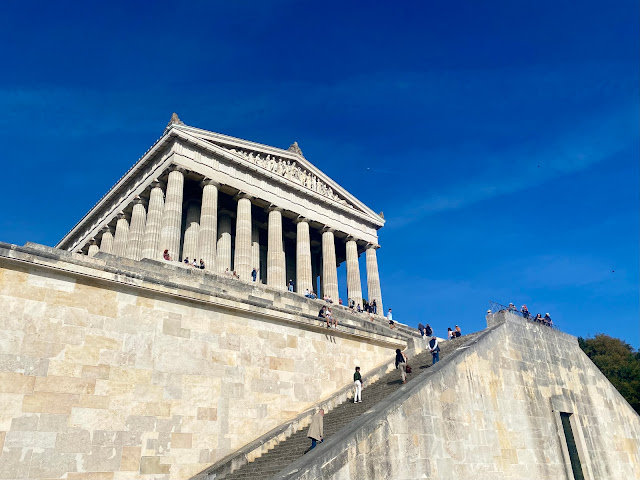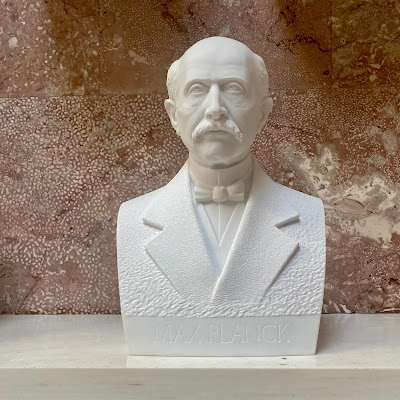Valhalla has always loomed in my imagination, less because of its origins in Norse mythology as the hall where the heroic and chosen go to await battle instructions than the location of the beautiful cemetery in Westchester where the Hons bury their dead. It's also a magnificent structure in Bavaria (spelled with a "W" rather than a "V") that looks a lot like a newer Acropolis.
The neoclassical structure sits above the Danube, not far from Regensburg. In the summer, you can take a tour boat to a dock at the base and climb up to see it.
Walhalla is the centerpiece of a campaign by Ludwig I to inspire pride among German speakers in the wake of the Napoleonic wars when the country's modern borders had not yet been established. If so, the monument probably would have been built on the more central Rhine river.
Like the inlaid marble floor indicates, it was completed on October 18, 1842, after more than a decade of construction.
I couldn't quite catch the splendor of the cavernous, skylit interior designed by Leo von Klenze, the court architect.
More than 130 busts of famous German speakers, nearly all men, adorn the walls. They include scientists, composers, artists, religious figures and even a member of the Nazi resistance. It's interesting to note that Ludwig's royal descendants were no fans of Hitler.
Ludwig chose nearly 75% of the 130 people who have been honored with busts. Nicholas Copernicus was sculpted and installed first.
Martin Luther didn't make the first cut because it took Ludwig five years to overcome his Catholic bias and suspicions of the reformer.
In addition, there are 64 plaques embedded beneath the ceiling that memorialize German speakers whose likenesses are unknown or unverified, including Charlemagne, whom some historians have called the first Holy Roman Emperor.
Whether the individuals are represented with busts or plaques, Ludwig honored only those who had been dead at least a decade to provide some sense of objectivity. I photographed everyone whose name I recognized. Composers comprise the majority by far.
 |
| Ludwig van Beethoven |
 |
| Richard Wagner |
Peter Paul Rubens is the handsomest.
Since 1966, the German people have been responsible for nominating new additions--as well as paying for the busts--who must have been dead for at least two decades by decree of the Bavarian government, which also makes the final selection. Twenty-one-year-old Sophie Scholl, added in 2003, represents the Nazi resistance. She and her 24-year-old brother, Hans, were beheaded 61 years earlier in Munich for distributing anti-war leaflets. I'm proud to stand with Sophie now, but wonder if I would have had her courage.
Physicist Max Planck, a Nobel Prize-winner best known for developing quantum theory, made his debut just last year.
More Bavaria:












No comments:
Post a Comment